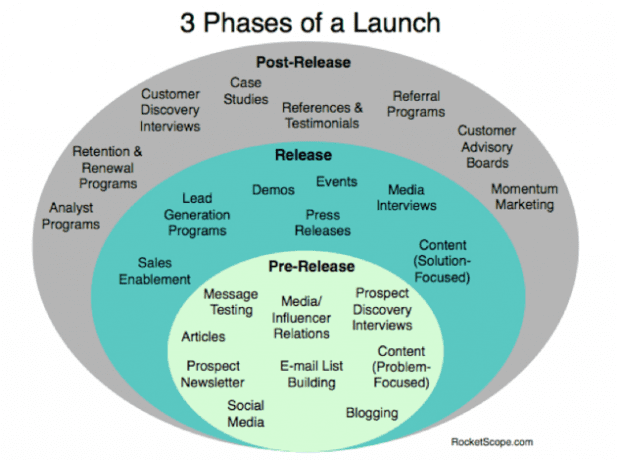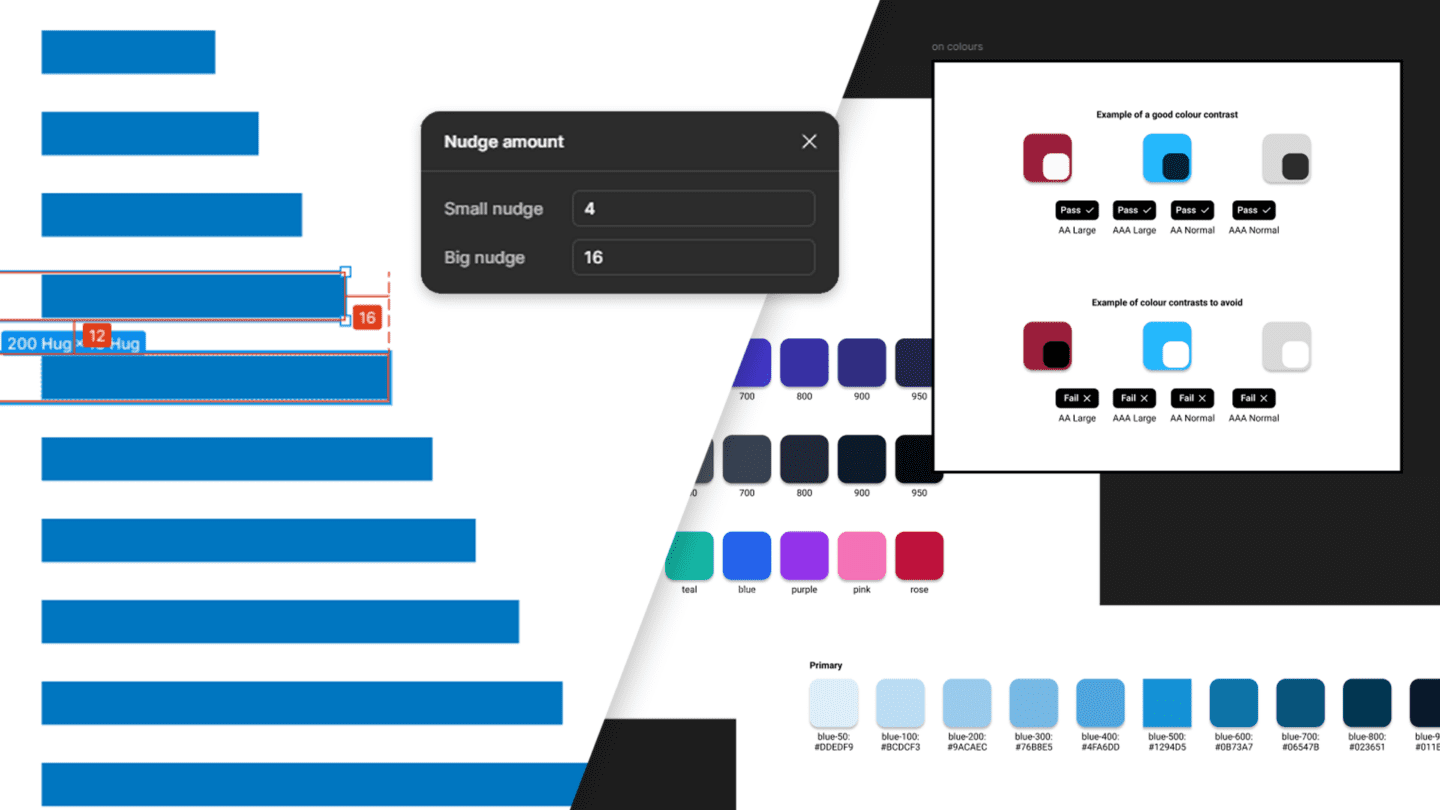Over the years I’ve come across and contributed to a diverse range of start-up launch strategies and tactical plans. A few things I’ve learnt from these experiences are that:
- Your launch plan (and the strategy that informs this) is key to making a noise on day 1
- If done successfully, this can easily lead to exceeding your original (sales and marketing) targets
- If done poorly, a failed launch will not achieve your desired outcomes (in terms of reach, perception and actions). In fact, it can have a negative impact on potential customers as well the motivation of your internal team
- A successful launch is no guarantee that a business will succeed.
What is a launch plan & how do I develop one?
The key ingredient of all of the successful launches I’ve observed has been a launch plan that is not only SMART objective-driven. But also, clearly details the steps required prior to, during and following the launch of your start-up.
As without a launch plan that is tightly focused on who you are trying to reach and the actions you wish these people to take you will be shooting in the dark.
Your (pre) launch plan should clearly detail:
- What are your objectives for launching your business?
- What must be done to achieve these objectives?
- When is the right time to (pre) launch our business?
Start by setting your objectives
What do you wish to achieve by launching your business?
Whenever we’re asked to think about this, we do so in terms of 3 core chunks:
- Acquisition
- Behaviour
- Outcomes
More often than not, first-time entrepreneurs are focussed on 1. So, we’re often told that the primary business objective of launching is to generate as much traffic as possible. But the truth is for a launch to be truly successful you don’t need a high volume of traffic. In fact, this can often be a negative. Instead what you ideally want is a substantial volume of quality traffic. After all which sounds better to you:
a) reaching 10,000 users of which none take an action that benefits the business
vs
b) reaching 1,000 users of which 1% take an action that benefits the business
So, even though your initial business objective may be something along the lines of generating 10,000 visits to the website/landing page per month. When you start drilling into this and thinking about things in terms of behaviour and outcomes, it soon becomes clear that the “true” business objective should be to generate 100 sign-ups for our beta within 1 month of launching.
Therefore, for each objective you identify it is absolutely critical that you assess how aligned this objective is to your short-term business requirements.
Identify who you wish to reach
Go back to your initial customer research and marketing plan. Review this and reassess how well you’ve defined who you wish to target with your pre-launch.
If you haven’t you should consider completing a customer mapping or proto-persona exercise.
This step is critical as it will allow you to define:
- Who you need to reach?
- What are their preferences?
- How you can capture their attention?
- Who influences these people?
- What tactics you should pursue to reach each target audience segment as effectively as possible?
Define and prioritise the actions you wish people to take
What do you want people to do when they land on your website or landing page for the first time?
You should brainstorm all of the potential actions a visitor could take from the obvious, for example signing-up. To the less obvious, visitor downloads tip sheet.
You should then go through this list of actions and select your macro-conversion. This is the one action you wish a visitor to take, prior to leaving the website.
Don’t forget, a key objective must be to effectively establish your brand/business as a new, authoritative and trustworthy entity that is worth paying attention to.
Choose a date
There is no such thing as the perfect date. An element of compromise will always be required.
Selecting a data early-on will help you schedule what needs to happen and when. It will also set a line in the sand that should kill any thoughts “we need to delay this until we’ve got that.”
Develop an analytics measurement model & configure your analytics package
As soon as you publish a web page you need analytics to understand what people are doing on that/those page(s). To do this effectively you need to think about why your business has built a website and what the website must do to help you achieve your business objectives.
On day 1 your web analytics requirements are likely to be fairly straightforward. Therefore, we’d always recommend that you start by installing Google Analytics. You can consider other options at a later date but in most cases, there’s no point considering alternatives until you know exactly what you need from your web analytics solution.
To set up Google Analytics simply:
1. Create a Google Analytics account
2. Configure your tracking code
3. Set-up funnels, goals and custom reports (if required)
4. Set-up/link your Google Webmaster Tools account
For more information please refer to Google Analytics set up checklist.
Keyword research
Even though Google is constantly changing the way in which websites are ranked. Keyword research is still key to increasing the chances that search engines will list your website within its search results for a certain keyword term. After all who doesn’t want to appear in the first few results as and when people actively search for a product a service you’re hoping to sell.
Choosing the right keywords for your business requires research. To do this effectively I’d highly recommend you read MOZ’s beginner’s guide to keyword research and then start experimenting with the following tools:
Finalise your launch and promotion strategy
Your launch and promotion strategy should be focussed on prospective customers. You should split your global audience into specific segments, e.g. cold prospects, warm prospects, friends and collaborators, influencers, etc and then tailor your tactics to each segment identified.

Like any robust promotion strategy, you should be thinking about how you can stimulate word of mouth and word of mouse referrals. Whether you’re doing this offline or online you should consider what promotional tactics will generate the most traction with your specific target audience segments.
Typical tactics include give-aways, competitions, discounts and special offers. But you should go further than this and articulate how these promotional offers are going to be tailored to each channel you use and target market segment you wish to target.
Monitor your brand
There are a number of free and useful tools that notify you when people mention your company or the products and services that you sell online.
Your first step should be to set-up Google Alerts. But you should also consider extending this to social media by using tools such as TweetDeck or SocialMention.
Back-catalogue of high value content
When people land on your website for the first time you should provide them with a back-catalogue of useful and relevant content. Don’t just launch with a pithy welcome post!
Instead take the time to think about how you can leave a first-time visitor with the impression that your website is a treasure-trove of information they have to return to. To do this think about how you can generate content that will help people achieve their aims.
Yes, volume matters, but quality over quantity should still be your mantra.
A well-designed website or landing page
Your website must immediately communicate who your business is, what your business does and what people will get from investing their time on it. At the very least it needs to make it easy for visitors to accomplish a few simple things:
- Navigate and scan
- Read content
- Share content
- Sign-up for something e.g. your product/service or your email newsletter
- Leave a comment
Social Networks

Choose your touch points carefully
- Developing a meaningful presence on a social network requires patience, time and effort. Therefore, be realistic about the resources it will take to successfully plan, manage and grow your presence per social network presence you choose to maintain.
- Investigate which destinations are likely to benefit your brand or drive meaningful traffic.
Claim your name
- Try and standardise this across the social media touch points you choose to maintain
- Even if you do not wish to use Twitter or Facebook you should claim your desired “name” on these.
Set up your presence
- Complete your profile and upload visual assets that showcase your brand, products and services.
- Add content so that people have something to consume when they land on each touch point for the first time.
Build your audience
There’s a wealth of information on how to do this available online. But we’d always recommend that you start with each platform’s guidance.
Email capture and marketing
I’ve written about the importance of email marketing before. Why? Because it’s repeatedly found to be one of the most effective marketing channels there is. But before you can start an email marketing campaign you need to build your list. To do this simply:
- Identify where you can effectively integrate an email capture form on your website (feel free to contact us for specific tips on how to improve your existing placement or to integrate an email capture form on a new website or web page)
- Craft copy that clearly articulates the benefits of signing-up for your email marketing
- Add the email capture form(s) (or a link to it) to your website, blog and social media profiles
- Add an opt-in field to all of your website’s existing contact and sign-up forms
- Consider adding this by default to your products or services terms of service and profile/account settings
- Cleanse your existing contact database by emailing your existing contacts and ask them if they’d mind receiving your email marketing newsletter
- Implement a process that ensures customer-facing staff ask for these permissions when interacting with prospects and new customers
- Regularly prompt your followers on social media to sign-up
- Periodically incentivise sign-ups with special offers, advanced content or discounts.
Choose your provider
There are so many options available that the only way to find the best provider for you is to focus on your requirements. Our starting point when investigating options on behalf of a client is how well integrated is this product with the software and tools we already use.
Once you’ve selected your provider, you’ll need to sign-in and start:
- Adding or importing your email contacts database (CSV import is probably the most efficient way to get started)
- Customise the look of your emails (use a default template at first)
- Set up your default templates (e.g. the welcome email, confirmation email, unsubscribe email, etc)
Post launch checklist
The moment your landing page has been deployed:
- Run one last check (test all links, buttons etc as well as checking for typo’s)
- Email your contacts database to let them know you’ve gone live
- Email influencers and promoters (you’ve identified in your promotional plan)
- Thank everyone who has helped you
- Monitor comments and mentions across social media and respond as soon as you seem them
- Reach out to local/domain-specific (offline and online) news and media outlets
- Continue to generate high value customer focussed content
- Monitor the qualitative and quantitative feedback that you collect
- Set a date in the diary to review your launch and the data at your disposal.
Need a hand with your launch plan?
Get in touch to discuss your plans and how we can help you achieve your objectives.


